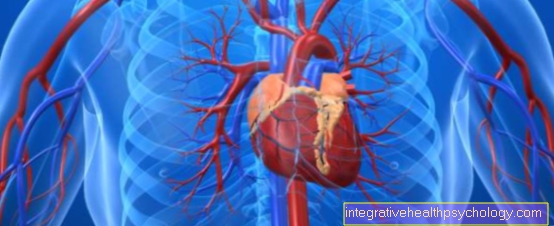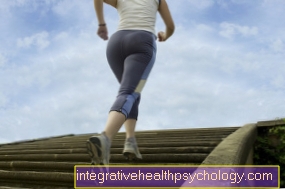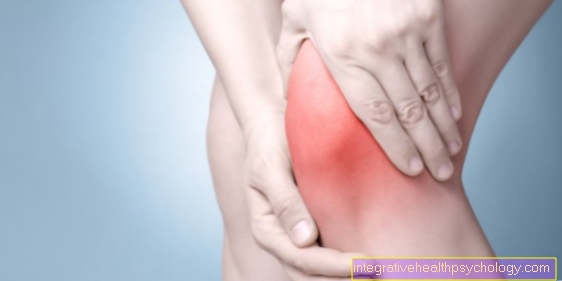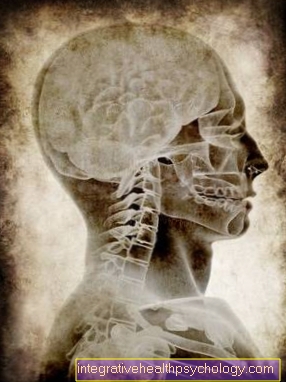Movement science
definition
In addition to training science, movement science is a branch of sports science and emerged from the merger of general and special movement theory.
It is dedicated to the scientific observation and research of movements.

Classification of movement science
According to RÖTHIG, exercise science is divided into 3 classes.
- Pedagogical-normative conception
- Cybernetic system-theoretical conception
- Integrative-functional conception
The science of movement from the point of view of pedagogy
The key question in this conception is at what point in time the test person is receptive or unresponsive to certain motor learning goals. Accordingly, ontogenesis is an integral part of the investigation of movement in the educational framework.
The cornerstones are:
- Characteristic of motor learning
- The historical development of sporting techniques
- Training in motion vision
- Application of the knowledge in the lesson
You may also be interested in this topic: Movement education
The science of movement from the point of view of cybernetics
Cybernetics deals with people who do sports as an information processing system. Information acquisition and processing as an internal process are in the foreground with this approach.
More information on this topic:
- Movement coordination
- Coordinative skills
Movement science approaches
From a movement science perspective, the diverse concept of movement must be presented with different perspectives. Movement is not unconditional in its external appearance, but requires internal control and regulation processes (internal aspect of movement), the investigation of which, in addition to analyzing the external aspect, is one of the main tasks of movement science.
Different considerations of the concept of movement in the canon of the investigation of movement science.
- Morphological approach
- Biomechanical approach
- Functional approach
- Empirical-analytical approach
You may also be interested in this topic: Biomechanics
Morphological approach
This pre-scientific method is used to convey movements.
The movement is reduced to the pure appearance, and the knowledge of how the movement comes about is neglected. The aim of the morphology is to provide information for guidance and correction. The description of movement is very differentiated, but only with regard to the externally visible movement. Speed of movement, strength of movement, range of movement, constancy of movement, precision of movement, flow of movement and coupling of movements are terms used to describe the morphology.
Functional approach
Human actions cannot be properly understood when viewed solely from the mechanical, physical and psychological point of view.
Neurophysiological aspects are important for the occurrence of human movements, but if you want to analyze the athletic movement completely, the movements must first be given a meaning. The functional aspect of a movement cannot be ignored.
Characteristic of movement science
- Empirical science: Movement science is an empirical science because it seeks and finds knowledge in reality. As an example, here are the technical improvements in the individual disciplines.
- Cross-sectional science: Movement science is one of the cross-sectional sciences because it draws on findings from other sub-areas of sports science (physiology, sensorimotor functions, psychology, etc.).
- Applied science: Movement science as an applied science, because it strives to implement the knowledge gained in reality. Only this application enables the validity of individual methods to be checked.
- Integrative science: It checks and questions findings from other sciences.
The movement
In order to understand and describe athletic movements, the term movement must first be explained in more detail. In general, we understand movement to mean the pure appearance. We only look at the movement from the outside and do without internal laws.
Structure:
- Everyday movement: for everyday movements, such as walking / jogging is an automated movement that does not require any thought processes.
- Work movements: such as Assembly line work are everyday movements that serve to work in a repetitive process.
- Target-purpose movements relate to the product of physical activity (running to lose weight or for health)
- Sports movements are forms of simple, combined or complex competitive movements.
- Expressive movements in the form of facial expressions and gestures of movement serve to express moods and communication.
Read more on the topic:
- Lose weight
- health
Further differentiation within the sporting movement
- Fast and slow movements (somersault vs. walking)
- General and special movements (To run vs. Hand support overlap)
- Open and closed movements (punch in handball vs. hurdles)
- Gross motor and fine motor movements (beginners vs. advanced)
- Large motor and small motor movements (serve in tennis vs. darts)
- Conscious and automated movements (shot on goal, soccer vs. walking)
The term motor skills
In the biological field, motor skills are the teaching of movement factors in the human body. Motor skills are everything that you cannot see in a movement.
A typical example in which the difference between motor skills and movement becomes visible is the cross slope in gymnastics. For the muscles, the cross slope means the greatest strain, although movement is not visible from the outside. The motor skills contain neurocybernetic characteristics that also include the content of consciousness. Movement, on the other hand, is an objective way of changing the location of body mass in space and time.
What is applied movement science?
The Applied Movement Sciences bachelor's degree is a separate degree. It is offered at the University of Regensburg and the Technical University of Chemnitz, among others.
The focus of the course is on the transfer of knowledge from movement science to actual application, for example the development of training, sport and movement programs. The training enables the graduate to work in many institutions, such as spa and rehabilitation clinics, sports clubs, health centers or educational institutions.
What is a movement scientist?
Movement scientists deal with the functioning of human motor skills and various aspects of movement on a scientific and practical level.
You will develop scientifically based movement therapy programs in the context of prevention, training and rehabilitation. Movement scientists work closely with other specialists from the fields of sport, health and nutrition and develop, evaluate and optimize movement concepts for a wide variety of target groups.
Movement scientists can work scientifically and advance the research and development of programs, but also work in practice, for example in health clinics, rehabilitation centers, in sports clubs, retirement or nursing homes, or work independently as trainers and consultants. The training to become a movement scientist usually includes a bachelor's degree with a subsequent master’s degree.
Studies to become a movement scientist
The movement sciences course is completed with a Bachelor of Arts or Bachelor of Science degree.
Although both courses are very similar in terms of content, there are subtle differences in the weighting of, for example, artistic and scientific aspects. There are also numerous other courses that deal with the subject of exercise science, such as the sport science course. For details, one should deal in detail with the offers of the various technical colleges and universities.
In general, the standard period of study in the Movement Sciences course is six semesters. The requirements for applicants are set by the universities, in most cases a sports aptitude test and / or a cognitive test is a prerequisite for admission. The course provides for dealing with various topics in movement science, including biomechanics, training science, sports medicine, sports physiology, psychology, pedagogy and others.
The bachelor's degree enables graduates to carry out a career in the field of movement sciences, and it also enables them to continue their academic training as part of a master’s course.
What is movement theory?
Movement theory is the study of the musculoskeletal system, the sequence of movements and the basis of human movement. Movement in sport is a particular focus.
In kinetics the properties of the musculoskeletal system, consisting of physiological and anatomical elements, are studied. Movement sequences are analyzed and optimized with the aim of making movement more efficient and injury-free. For this purpose, movements are described and assessed on the basis of various quality features.
Movement theory is part of education, physical education and various subjects in the field of sports science. Scientific knowledge of movement science and movement science form the basis for rehabilitation programs, sports programs and prevention.
Read more on the topic: Movement theory
General movement theory
In general movement theory, cross-sport methods are sought.
It summarizes all data and systematizes what all movement theories have in common. Example: The use of interval training initially served to improve endurance in the athletic disciplines, and was then also used as a training method in numerous other sports (swimming, handball, etc.). The general movement theory is looking for similarities in the individual sports.
Special movement theory
The special movement theory developed from the practice of the individual disciplines.
The Fosbury flop from the high jump is a prime example. Laboratory tests showed that the forward flop technique would be the optimal technique for crossing the bar, but that this technique cannot be used in practice. The practice of the sport is leading here.



.jpg)



.jpg)





















